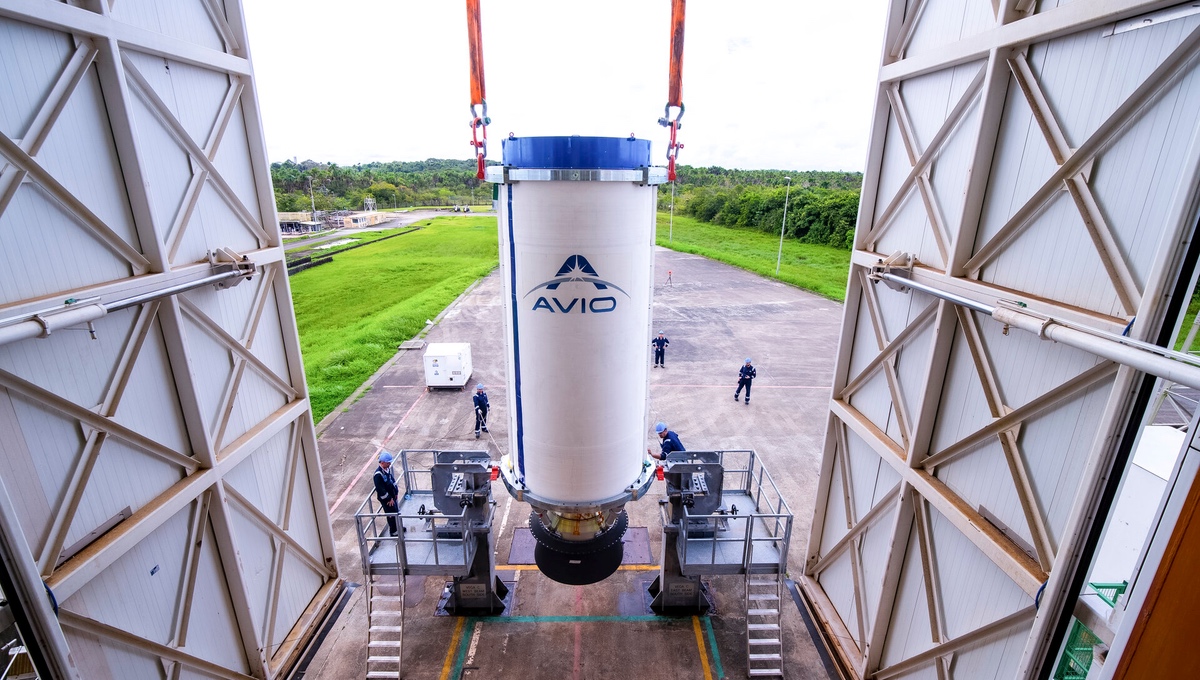WASHINGTON — A solid rocket motor for Europe’s Vega C rocket malfunctioned during a static-fire test June 28, likely pushing back the vehicle’s return to flight to 2024.
In a June 29 statement, Avio, the Italian company that is the prime contractor for the Vega, said a Zefiro 40 motor experienced an anomaly during a test that was part of effort to requalify the motor after a launch failure last December.
The static-fire test was intended to demonstrate the performance of new carbon-carbon material in the motor’s nozzle throat. Avio replaced that material after similar material from a Ukrainian supplier eroded, causing a loss of thrust during a December 2022 launch of the Vega C. That rocket uses the Zefiro 40 for its second stage.
According to Avio, the new carbon-carbon material performed as expected. However, an unspecified anomaly took place 40 seconds into the firing. That caused a reduction of pressure in the motor before the 97-second firing ended. The company did not disclose additional details about the nature of the anomaly or loss of performance.
“This aspect will require further investigation and testing activity to be conducted by Avio and the European Space Agency to ensure optimal performance conditions,” the company stated, adding that it would be days of weeks before the investigation into the anomaly is completed.
“We have to see in detail what this anomaly will mean” for the Vega C, said Josef Aschbacher, ESA director general, during a June 29 press conference after a meeting of the ESA Council in Stockholm. “This will have an impact because it was a very important milestone on our roadmap to the return to flight for Vega C.”
The test was one of the key steps in the effort to return the Vega C to flight. Avio also said in March, when the investigation into the launch failure was completed, that it would carry out a broader review of the supply chain of the vehicle to look for any other potential issues.
The Zefiro 40 is not used on the original version of Vega. Avio said it is proceeding with plans to resume Vega launches in September. Before the test incident, the Vega C was expected to make its next launch late this year carrying the Sentinel-1C radar imaging satellite that is part of the Copernicus program.
This incident makes a return to flight for Vega C this year increasingly unlikely, but Avio did not comment on a new schedule. “The planning for the return to flight of Vega C is currently under evaluation, pending further analysis and investigation,” Avio said in the statement.
At the ESA Council meeting, Aschbacher said that the council agreed with a recommendation from ESA’s inspector general to shift the launch of the EarthCARE spacecraft, an Earth science mission, from Vega C to Falcon 9. He said that was linked to both changes in the design of EarthCARE that would have required modifications to the Vega C payload fairing to accommodate it as well as the December 2022 launch failure. EarthCARE is scheduled for launch in 2024.
